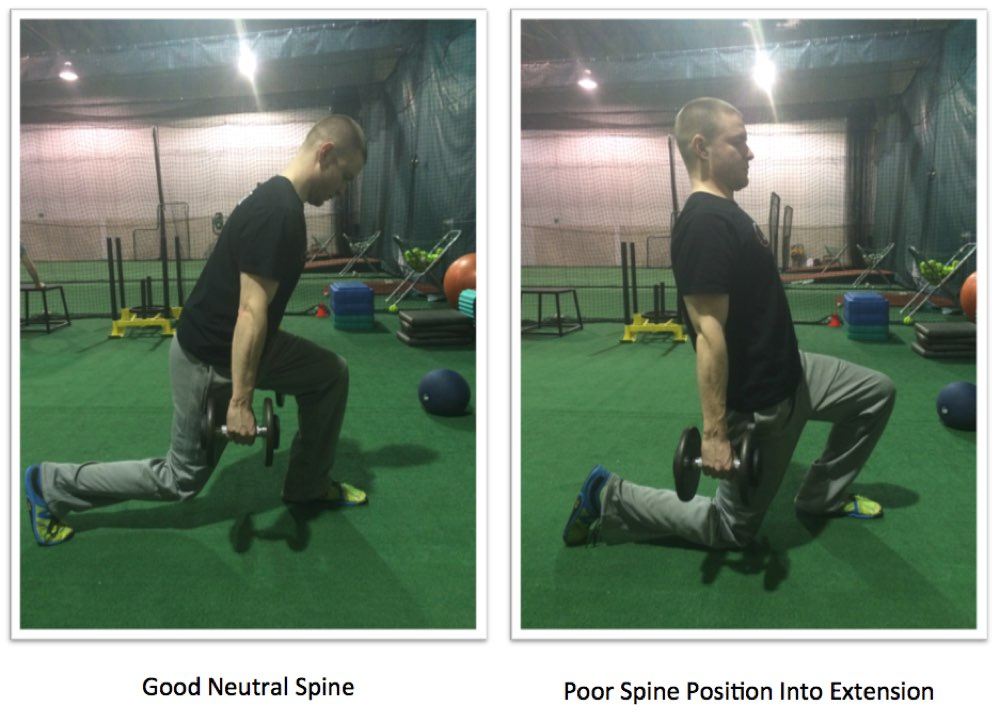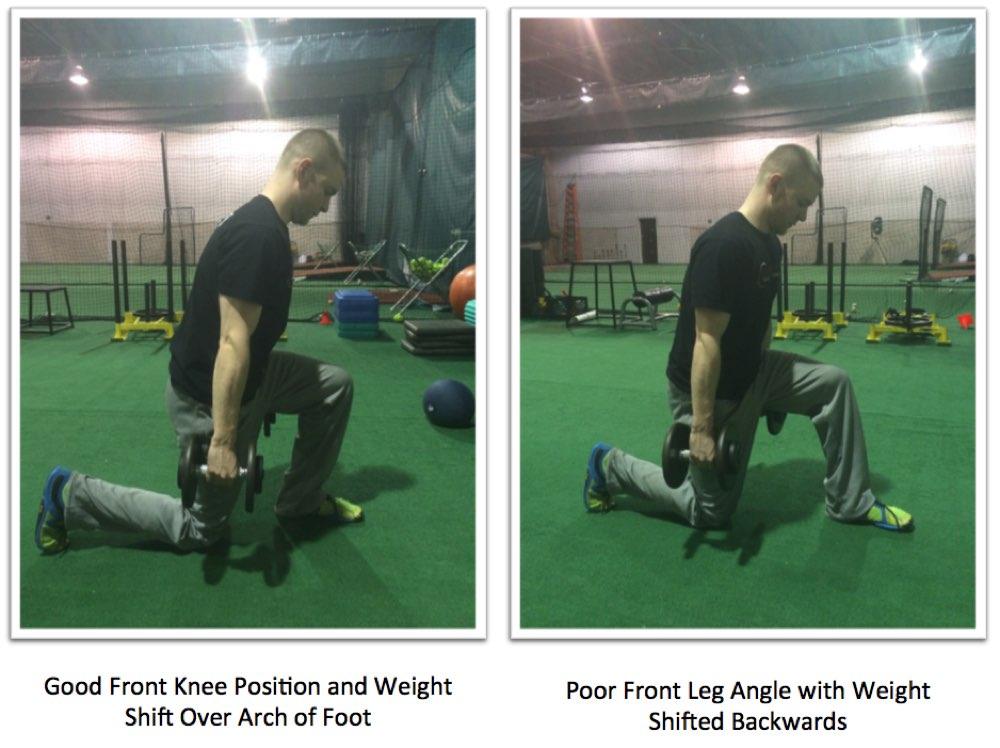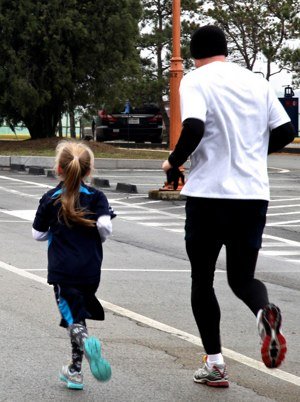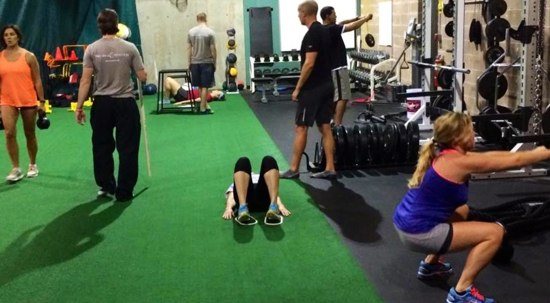5 Tips to a Better Lunge
Lunges are terrific exercises to train single leg strength, size, and overall performance. They are great for a beginner and can be progressed for the more advanced trainee. While there are many variations that vary in intensity, we are going to look at how to make sure we are getting the most out of any lunge variation.
Let’s take a look at a dumbbell reverse lunge. A reverse lunge is a variation we start most of our athletes and clients on. It is slightly easier to perform and is easier on the knees than a forward lunge because our body doesn’t need to decelerate quite as much. For a dumbbell reverse lunge we would hold a dumbbell in each hand, take a step back with one leg, tap the knee to the ground and stand back up.
Sounds simple, but let’s look at some tips on how to lunge better.
Tip #1: Stand with Your Feet Inside of Hip Width
Right from the start we want to be doing things right. The shortest distance between two points is a straight line. We have all heard that before.
In this example, if we start with our feet to wide, we tend to move our leg out to the side and not straight back when initiating the movement. This can cause an uneven weight shift and can be troublesome to balance. Even if we start by moving the leg to the side but finish in hip width, we are just wasting energy that we need to correctly execute the lift.
Also, if you watch many younger athletes exercise, you will notice that they place their feet extremely wide on most movements. A wide stance leads to the feeling of more stability. That’s because they haven’t achieved stability yet in what we would consider a more sport specific stance.
Tip #2: Apply Pressure Through the Arch of Your Foot
After you have taken a step back and are ready to stand up tall, think about having your weight centered through the middle of your foot, or the arch of the foot. A cue we will use is to “push through your shoelaces.”
This creates optimal force production through your lower body. With the majority of our weight on our toes, our center of gravity has now changed and can throw off our balance. With weight to far towards our heels, we have a tendency to drive backwards before we move in a forward direction. Which brings us to our next tip.
Tip #3: Maintain a Neutral Spine
Take a step back, tap the knee, apply force through the arch of the foot and begin to stand up. The path we take in standing up is going to make the accent easier or harder.
As I mentioned before, having too much weight on your heel makes us drive backwards before coming forward. Even if our body weight is distributed in the right place, we aren’t out of the woods just yet. Maintaining a neutral spine means to keep the spine (back) flat. How do we do this?
On the way up from the reverse lunge, we want to make sure we have a deep breath to help brace and protect the spine. Along with breathing we want to squeeze the abs super tight. Pretend that someone is about to punch you in the stomach.

Tip #4: Think of the Reverse Lunge as a Forward to Backward Movement as Opposed to an Up and Down Movement
Tip 4 piggy backs on tip 3. Before we say “stand up”, let’s think of it as “move forward”. After all, we are performing a reverse lunge. The opposite of reverse is forward. You want to create a 45 degree angle with your torso and maintain a neutral spine in that angle. Think of the movement as momentum goes backward, then momentum goes forward. Backward and forward not up and down.
Creating a backward and forward motion helps to prevent excess pressure on the lumbar spine by not slipping into lumbar extension, our body’s number one compensation pattern.
Tip #5: Hold the Dumbbells with a Firm Grip
Not every lift requires an uncomfortable amount of tightness. But most do require some. I’ve tried to perform a lunge using every other tip except for this one, and it throws everything off. Your grip is your last line of defense.
If you have a lose grip, chances are you are going to be loose somewhere else which is going to create balance issues, lead to ineffectiveness of the exercise and increase your overall chance of injury. I’ve talked in a previous blog post about the Law of Irradiation; which states that when one muscle tenses, it creates tension in nearby muscles. Applying this principle helps prevent any energy leaks along the chain and keeps you safe.
If at any point in the reverse lunge someone is having trouble with any of these tips, it could also be that the weight being used is too heavy. When in doubt, decrease the weight, become proficient at a lower weight and then progress. Master the movement first, then the exercise.
All of these tips can still be applied to other variations such as a forward lunge or walking forward lunge. For example in a forward lunge, you still want to maintain a neutral spine and have your whole body return to the start position together. As opposed to leading with your upper back, which causes you to extend at the lumbar spine and not allow for optimal anterior core firing.
Give these 5 tips a try the next time you are performing a lunge in the gym!






